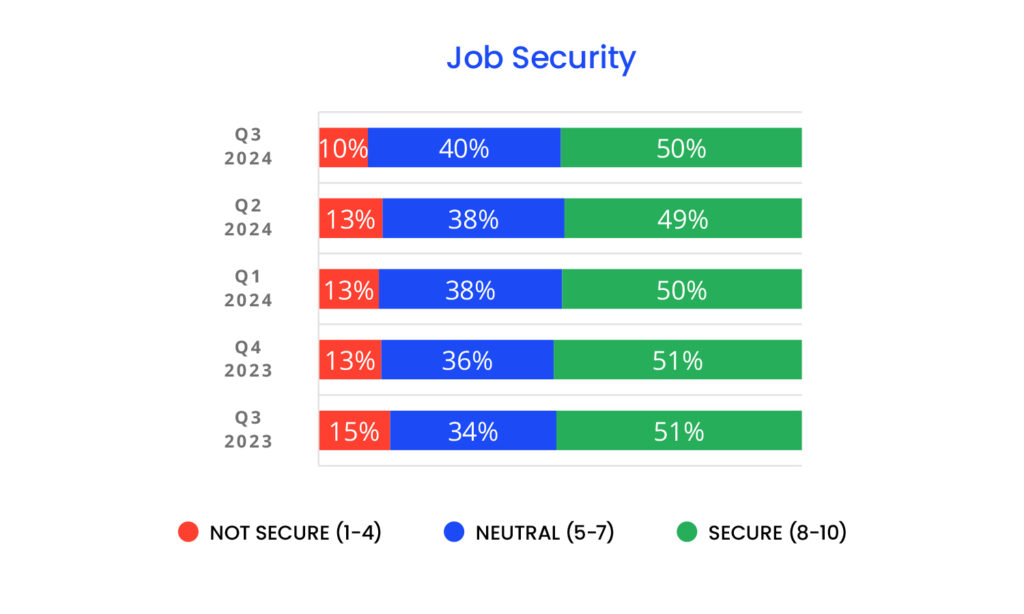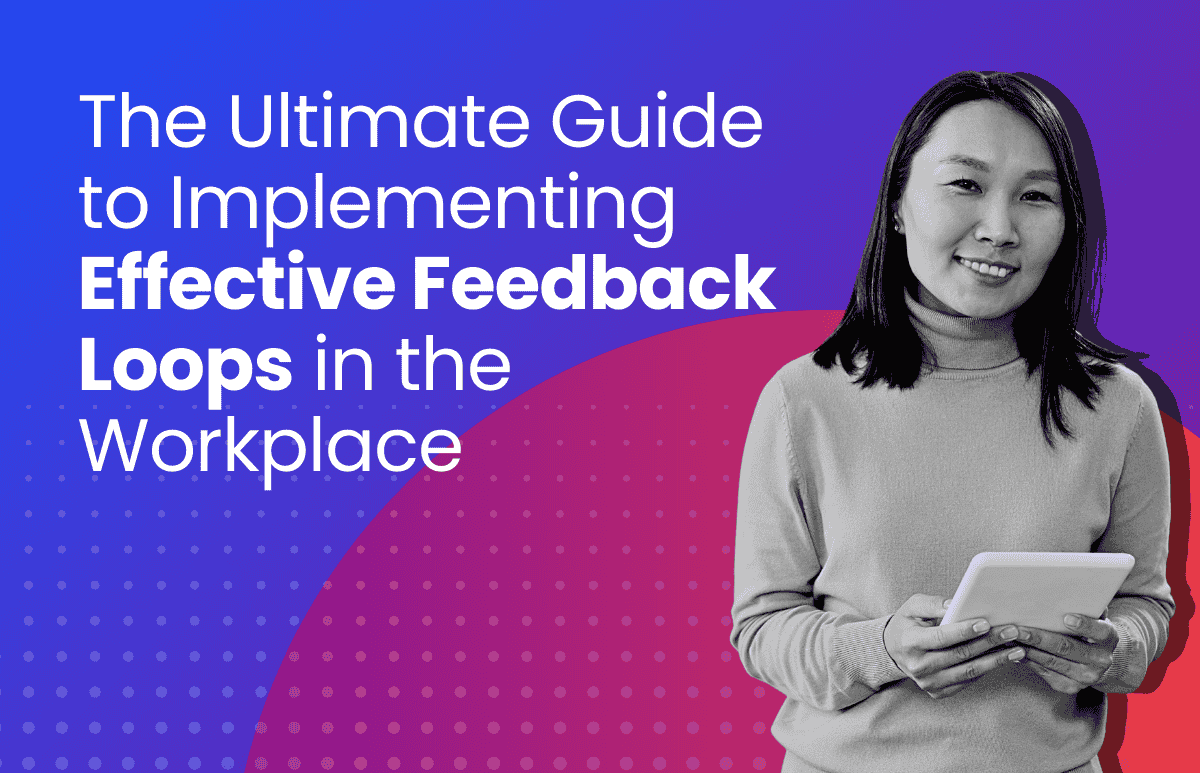ESI Report Q3 2024 in Australia: Job Security, Workload & Leave Trends

Every quarter ELMO researches how Australian employees feel about a range of factors including, job security, hours worked, wellbeing, and productivity. This quarter we also focused on annual leave, workload, and technology.
You can download and read the full report here: ELMO’s Employee Sentiment Index Australia (July-Sept ‘24)
We have also summarised the key findings and insights below.
It’s encouraging to see cautious optimism surrounding job security, especially among older generations. There are, however, persistent concerns about potential redundancies and workload pressures, particularly among younger employees.
This highlights a degree of uncertainty in the current work landscape. Given the current Australian financial landscape, it’s probably no surprise that a lot of leave is banked up coupled with hesitation in taking time off. This highlights the influence that financial anxieties have on job insecurity.
There’s a strong focus on future-readiness and technology. Employees seem to value training and development opportunities and recognise the potential of technology to enhance productivity.
Key Findings
Cautious optimism in job security
Overall, perceptions of job security have improved slightly, with organisational security showing the most significant increase (50%). This positive sentiment is mainly driven by older generations as Gen Z are far less likely to feel secure in their organisations.

This speaks to a potential generational divide in perceptions of job security. Despite the improvement, anxieties about job security remain. Nearly one-third of workers anticipate potential redundancies in the coming months and 38% feel pressured to work longer hours to protect their jobs. These concerns are particularly prominent among younger employees.
Rising workload and headcount concerns
A substantial 43% of employees say their workload has increased in the past three months, slightly up from this time last year (40%). This increase is largely attributed to less people doing the same amount of work, a trend impacting 41% of those affected.
Company growth and the amount of work to be done have also increased workload. Queenslanders are likelier to report workload increases compared to the rest of Australia.
Leave accumulation and hesitation
One notable trend is the accumulation of substantial leave balances among employees. Approximately 22% of employees have accrued their full entitlement of four weeks or more, while the average employee has just under 16 days of leave.
A significant 29% of employees are saving their leave for potential emergencies or redundancies, and 21% say being too busy at work is a barrier to taking time off.
Focus on future-readiness and technology
Three-quarters of employees believe their organisations provide adequate training and development opportunities for future job demands (75%), employability (73%), and staying current with technological advancements (70%). Employees believe better task management processes, improved communication tools, and online learning platforms would enhance their productivity.
Insights
Open communication about workload
With a significant portion of the workforce (43%) reporting increased workload, employers must prioritise open communication with employees about workload management.
HR leaders can encourage managers to discuss workload concerns, explore solutions for headcount shortages, and advocate for better resource allocation. This could contribute to a more manageable and less stressful work environment.
Prioritise wellbeing and using leave
Fostering a workplace culture that emphasises employee well-being and encourages holidays can help reduce burnout, promote work-life balance, and create a more positive and supportive environment. By understanding how much leave your organisation has accrued, you can identify departments or individuals who might have a lot stockpiled. This may uncover other underlying issues that need to be addressed.
If your organisation is looking to reduce your annual leave liability there are three strategies you could implement.
- Introduce a leave bonus scheme
- Promote a healthy work-balance culture
- Make leave planning easier and more transparent.
Read more about these strategies here.
Proactively address job security concerns
While job security perceptions have improved overall, concerns about potential redundancies and the need to work longer hours persist, particularly among younger generations. This is where HR teams can proactively explore upskilling and reskilling employees to meet both current and future skills needs. Professional development can also alleviate anxieties and promote stability and career growth.
14% of employees believe Employee Self-Service (accessing payslips & leave management) would help them be more productive. By allowing employees to handle these administrative tasks, HR professionals and managers can focus more on strategic initiatives like talent development, performance management, and creating a positive work environment.
This aligns with the findings that Australian workers value training and development opportunities and that better task management processes could improve productivity
Download the full ESI report now for exclusive insights and data-driven recommendations.
 HR Core
HR Core 









